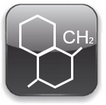Acrylonitrile butadiene rubber
Rubbers > Group R
Acrylonitrile butadiene rubber NBR | ||||||||
Nitrile rubbers according to ISO 1629 are identified by the initials NBR. Nitrile rubber belongs to the family of unsaturated acrylonitrile and butadiene copolymers. A serious defect of nitrile rubbers, in comparison with acrylic and fluorinated rubbers, is represented by the limited resistance to high temperatures, due to the presence in the macromolecular structure of the double bonds that can be eliminated by hydrogenation. The physical and chemical properties of nitrile rubber vary according to the composition of the acrylonitrile polymer. Acrylonitrile butadiene rubber (NBR), generally shortened to nitrile, is the first oil resistant rubber. The nitrile rubber NBR, is a synthetic rubber, copolymer of acrylonitrile (ACN) and butadiene. Qualities with high content of acrylonitrile with resistance and resistance to low temperatures. To ensure a longer life of the NBR parts, it is recommended to avoid direct contact with air, using it in immersion applications or maintaining a protective layer of lubricating oil. | ||||||||
| Symbols | Structure | |||||||
| | |||||||
| Caracteristicas del caucho | ||||||||
|  | |||||||
| NBR Physical-Mechanical properties | ||||||||
NBR grades with high acrylonitrile content have better resistance to oil and abrasion, while grades with low acrylonitrile content have better flexibility and resistance at low temperatures. In general, nitrile rubbers have only moderate physical properties but good abrasion and excellent oil and hydrocarbon resistance. However, they are not suitable for use with polar solvents. Nitrile rubbers also have a low gas permeability, especially those with high nitrile content but poor and modest heat resistance. Many properties can be adjusted by varying the acrylonitrile content in the nitrile rubber. The higher the nitrile content, the greater the resistance to aromatic hydrocarbons and the lower the nitrile content. High Nitrile> 45% Nitrile medium 30 - 45% Low Nitrile <30% The best overall balance for most applications is an average nitrile content. | ||||||||
| Como se obtiene el caucho sintetico | ||||||||
La NBR se produce industrialmente mediante copolimerización radicales en emulsión, muy a menudo a bajas temperaturas (5-30 ° C); es un método de polimerización heterogéneo caracterizado por altas tasas de polimerización y bajos porcentajes de monómero sin reaccionar. La polimerización en emulsión radical proporciona un entorno de reacción formado inicialmente por dos tipos de monómeros, a partir del agua que constituye la fase continua del sistema, el iniciador y un agente tensioactivo. Los surfactantes o emulsionantes están constituidos por moléculas que tienen un extremo polar e hidrófilo y una cola apolar y repelente al agua, por lo que tienden a reducir la tensión superficial en el agua para formar micelas de varias formas. Cuando el monómero se dispersa en la emulsión se dispone en gotas que son estabilizadas superficialmente por el surfactante y actúan como reserva de monómeros para la polimerización. Pequeñas cantidades de monómero se solubilizan dentro de las micelas y una parte muy pequeña en el agua, los iniciadores se disuelven y se activan en la fase acuosa donde el encuentro entre los radicales primarios y los primeros monómeros, los radicales en crecimiento, que se asemejan a las moléculas emulsionantes, se absorben en una micela donde la polimerización continúa a expensas del monómero presente en el interior. La reacción puede continuar gracias a la continua difusión del monómero desde las gotas, a través del agua y en las micelas hasta que un nuevo radical se difunde en su interior, terminando la reacción por combinación. El producto final del proceso es un látex que se coagula mediante la adición de un electrolito, que finalmente se seca y se comprime en balas. El proceso en caliente, en cambio, con el uso de temperaturas que oscilan entre 30 y 40 ° C, conduce a la formación de cadenas poliméricas fuertemente ramificadas que proporcionan al material una mayor resistencia al desgarre en caliente y al flujo gracias a los enredos físicos. |  | |||||||
| Vulcanization | ||||||||
For the vulcanization of the NBR, different methods are used: vulcanization with sulfur, efficient vulcanization (EV), semi-EV and vulcanization through peroxides. The vulcanization with sulfur is the most used for tires that have unsaturated sites in its structure. : 0.5-5% sulfur is used with a combination of activators and accelerators and cross-linking occurs after heating during the formation process, typically at temperatures between 120 and 180 ° C. Since sulfur is not very soluble in the NBR, the EV and semi-EV systems are preferably preferred. Vulcanization through peroxides, however, has been developed to reticular tires that do not have double bonds in the chain, but nowadays it is also used for unsaturated polymers such as NBR. The peroxides react with the polymer chain that extracts the hydrogen atoms from the CH bonds, thus creating polymeric radicals capable of reacting with each other; in this way if they get polymer chains directly linked together. through carbon-carbon bonds, which are stronger than the zolfo-carbon bonds and give the rubber greater thermal stability, greater aging resistance and a better compression set. | ||||||||
| NBR Applications | ||||||||
NBR has a wide variety of fields of application that require resistance to oils and fuels, such as in the automotive sector where it is used for the production of hoses, o-ring seals and menbrane; In the industrial field, on the other hand, it is used for the coating of molding rolls, hydraulic pipes, conveyor belts and for all types of joints for hydraulic systems. They are widely used in sealing applications, especially for oils and gasoline (aliphatic and aromatic hydrocarbons). The main applications include gaskets, seals, diaphragms, fuel hoses, linings, tubes, O-rings and cable linings. The carboxylated grades can also be used in many epoxy formulations. | ||||||||
